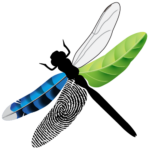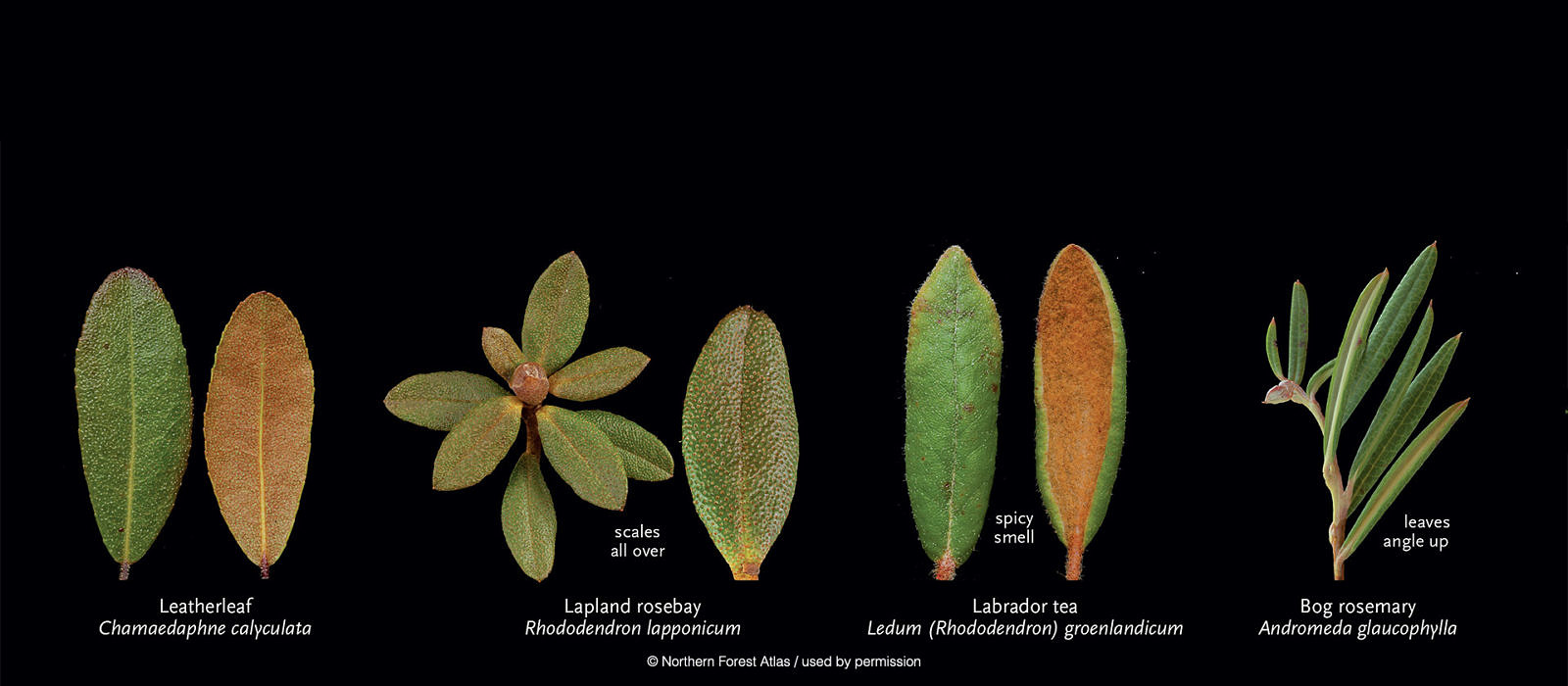
A Field Guide to Field Guides
Recommendations for Readers of Chasing Nature
Find your way in nature with help from books and other good stuff. If you’re brand new to some group of wild things, learn first from those books — not necessarily from apps. Here below are some of my favorite field guides and other resources, many of which cover the Northeast of the U.S. (where lots of my readers and I reside). If you do not live here, however, fear not: you’ll no doubt find superb regional field guides close to home, which I will be adding here in weeks to come.
My suggestions below skew toward birds, insects, and botany. But this is a living document, er, web page — so please send me worthy additions from around the world (particularly the U.K., which claims some phenomenal field guides). I’ll update regularly, including with other taxa — anything from sedges to slime molds and beyond.
Butterflies and Moths
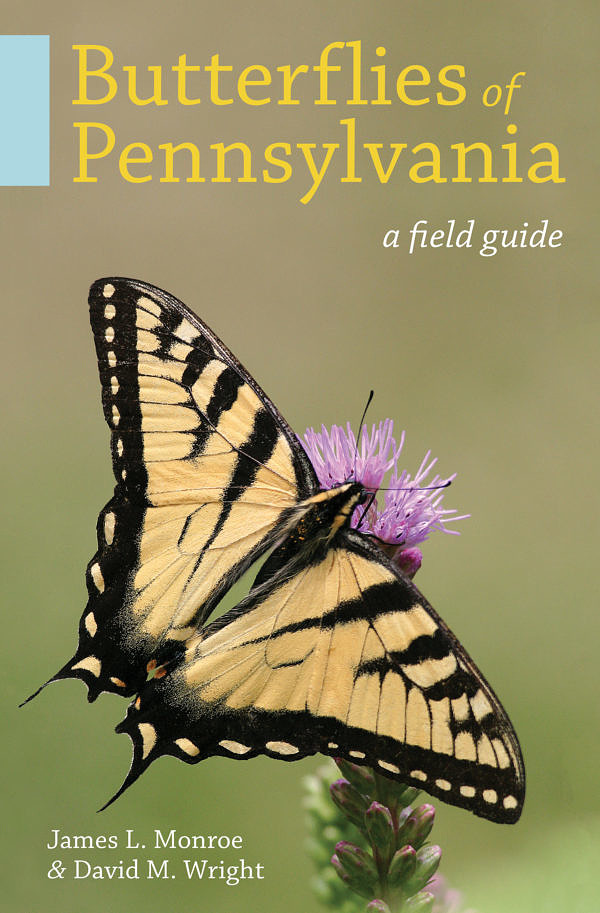 A Swift Guide to Butterflies of North America (second edition) by Jeffrey Glassberg – If you travel a lot and want the single most exhaustive field guide to North American butterflies (all photos, little text), this is the book to get. If you’re in New England, I suggest you buy this book and the Ontario or Pennsylvania guide listed below (or all three).
A Swift Guide to Butterflies of North America (second edition) by Jeffrey Glassberg – If you travel a lot and want the single most exhaustive field guide to North American butterflies (all photos, little text), this is the book to get. If you’re in New England, I suggest you buy this book and the Ontario or Pennsylvania guide listed below (or all three).
Butterflies of Pennsylvania: A Field Guide by James L. Monroe and David M. Wright — If you live anywhere in the Northeast, and want a masterpiece when it comes to butterfly identification and life histories, you will do no better than this guide. Note, however, that unless you live in Pennsylvania, you won’t have species distribution maps to help guide your way in identification; and this guide may lack certain species or include others that you won’t find in your state. Even so, this field guide is so good that you might want to buy and annotate it with your local species. Also note that images in the book are from pinned specimens rather than living butterflies. As a result, you may want another field guide to help you learn how various families and genera appear, carry themselves, and go about their business in the field. Not only does this guide cover the essentials of butterfly identification and life histories for most species in the Northeast, it includes special accounts of some of the classic identification challenges, with field marks you simply won’t find in other guides. It is a dream field guide.
The ROM Field Guide to Butterflies of Ontario – The province’s species richness matches, in large part, that of New England. But the strength of this guide for novice and advancing lepidopterists is its text descriptions of butterfly families, genera and species, and its inclusion of caterpillar and pupa photos. Overall, it’s a ton of learning packed into a single guide. Yes, the distribution maps cover only Ontario, which is a bit of problem if you don’t live there. But you can solve the map issue by annotating your copy with the species in your own region (with resources like the Vermont Butterfly Survey). You’ll learn a lot in the process.
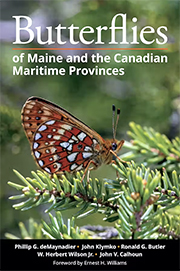 Butterflies of Maine and the Canadian Maritime Provinces — Full disclosure: I photographed a plurality of butterflies in this book. Not a field guide (although it does include stellar field identification tips for each species), this is more of an atlas to the lives, distribution (maps), and relative abundance of butterflies across Maine and nearby provinces. It’s essential reading for any casual or serious observer of butterflies in the region.
Butterflies of Maine and the Canadian Maritime Provinces — Full disclosure: I photographed a plurality of butterflies in this book. Not a field guide (although it does include stellar field identification tips for each species), this is more of an atlas to the lives, distribution (maps), and relative abundance of butterflies across Maine and nearby provinces. It’s essential reading for any casual or serious observer of butterflies in the region.
Butterflies of the East Coast: An Observer’s Guide by Rick Cech and Guy Tudor – Not a field guide, this large-format book is a masterpiece. With essays about butterfly biology and ecology, along with detailed species descriptions and spectacular photos, Cech and Tudor offer us a spectacular textbook to these wonderful insects (bring it along in the car when you head out butterflying). By the way, it’s out of print, so search for used copies.
Peterson Field Guide to Moths of Northeastern North America by David Beadle and Seabrooke Leckie – How fortunate we are, we Northeastern elites. We’ve got the first big replacement to Charles Covell’s classic moth guide to eastern North America. (I can’t for the life of me figure out why Houghton Mifflin Harcourt doesn’t show this book on its website.)
Les Papillons du Quebec by Louis Handfield – Covering moths and butterflies, this book is entirely in French (c’est la vie.), but it’s exhaustive. Get the identification guide and not the scientific version (unless you are a full-fledged moth fanatic).
Dragonflies and Damselflies
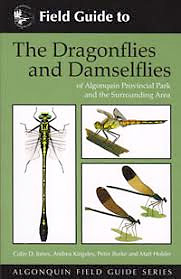 The Dragonflies and Damselflies of Algonquin Provincial Park and the Surrounding Area (second edition) by Colin D. Jones, et al. – Another superb field guide and textbook for learning from Ontario. The species diversity matches that of northern New England fairly well. But the real strength of this book is its text and necessary illustrations of morphological characters essential in identification. I use this guide as the textbook and field guide for my Eagle Hill Institute seminar on dragonflies and damselflies in Maine. (Again, you might want to mark up your copy with extra or missing species from your location, using resources such as the Vermont Dragonfly and Damselfly Survey.)
The Dragonflies and Damselflies of Algonquin Provincial Park and the Surrounding Area (second edition) by Colin D. Jones, et al. – Another superb field guide and textbook for learning from Ontario. The species diversity matches that of northern New England fairly well. But the real strength of this book is its text and necessary illustrations of morphological characters essential in identification. I use this guide as the textbook and field guide for my Eagle Hill Institute seminar on dragonflies and damselflies in Maine. (Again, you might want to mark up your copy with extra or missing species from your location, using resources such as the Vermont Dragonfly and Damselfly Survey.)
Dragonflies and Damselflies of the East by Dennis Paulson — Not only is Paulson one of the most knowledgeable biologists on Planet Earth, his field guide — there’s a western version as well — will have you covered no matter where you roam on the continent. For all-around use, this is now the continent’s go-to field guide. By the way, coming in February of 2019 from Dennis (and Princeton University Press) will be Dragonflies and Damselflies: A Natural History.
Damselflies of the Northeast by Ed Lam — Another masterpiece and one of the finest field guides to any taxon. Even if you buy other Odonata books, buy this one as well. (Incidentally, Ed is now producing a Peterson field guide to dragonflies, which you must have when it is published.)
A Field Guide to Dragonflies and Damselflies of Massachusetts by Blair Nikula, Jennifer L. Loose, and Matthew R. Burne. Not as comprehensive as the other guides I mention above, but it’s nice and concise and packed with essentials. I continue to use it in the field and in the office.
Botany
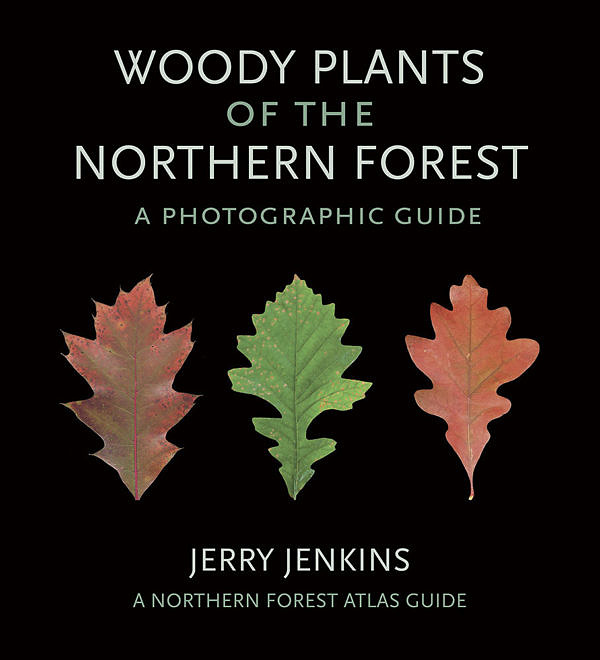 The Northern Forest Atlas Guides — Northern elites win again. We need look no further than this masterful suite of guide books, pamphlets, posters and web resources covering a region stretching roughly from Nova Scotia to Minnesota. If you don’t live in the Northern Forest (sandwiched between the oak forests of the eastern U.S. and the boreal forest of eastern Canada) these guides will make you want to move here. When you do, you’ll discover revealing and beautiful photography, along with efficient text, as your gateway to knowledge. Those ericaceous plants in the banner image at the top of this webpage come from the Atlas’ first major publication: Woody Plants of the Northern Forest by Jerry Jenkins. So much more is on the way — and we shall all be enlightened as a result. But don’t take my word for it. Visit the Northern Forest Atlas website, where you shall weep with joy or, if you haven’t moved here yet, with wistfulness.
The Northern Forest Atlas Guides — Northern elites win again. We need look no further than this masterful suite of guide books, pamphlets, posters and web resources covering a region stretching roughly from Nova Scotia to Minnesota. If you don’t live in the Northern Forest (sandwiched between the oak forests of the eastern U.S. and the boreal forest of eastern Canada) these guides will make you want to move here. When you do, you’ll discover revealing and beautiful photography, along with efficient text, as your gateway to knowledge. Those ericaceous plants in the banner image at the top of this webpage come from the Atlas’ first major publication: Woody Plants of the Northern Forest by Jerry Jenkins. So much more is on the way — and we shall all be enlightened as a result. But don’t take my word for it. Visit the Northern Forest Atlas website, where you shall weep with joy or, if you haven’t moved here yet, with wistfulness.
GoBotany — Yeah, okay, it’s not a book (but it’s based on a book, the outstanding Flora Novae Angliae by Arthur Haines). This website is among the finest examples of what the world wide web (otherwise littered with garbage) ought to be.
Newcomb’s Wildflower Guide by Lawrence Newcomb. Very much in need of an overhaul, but still very helpful.
Other Insects
- A Field Guide to the Ants of New England by Aaron M. Ellison et al.
- Tracks & Sign of Insects and Other Invertebrates by Charley Eiseman and Noah Charney
- A Field Guide to the Tiger Beetles of the United States and Canada (second edition) by David Pearson et al.
- Fireflies, Glow-worms, and Lightning Bugs by Lynn Frierson Faust
- Field Guide to the Flower Flies of Northeastern North America by Jeffrey H. Skevington et al.
- Bumble Bees of North America: An Identification Guide by Paul H. Williams et al.
- Caterpillars of Eastern North America A Guide to Identification and Natural History by David L. Wagner
- Insects of New England and New York by Tom Murray
- Songs of Insects by Lang Elliott and Wil Hershberger (out of print)
Other Organisms (Lots More to Come)
- Metamorphosis – Ontario’s Amphibians in all Stages of Development – by Peter Mills. Peter is a top-notch observer and illustrator. Otherwise, my herpetology colleague says the Peterson guide remains a fine choice for herps.
- The Nature Handbook: A Guide to Observing the Great Outdoors by Earnest H. Williams Jr.
Nature Online
As you learn from books, consider this (incomplete) list of online resources — mostly about insects (in part because birds are so well covered elsewhere). iNaturalist, eBird, e-Butterfly and Odonata Central are among the essential crowd-sourced datasets to help you find more nature and submit data of your own.
General Data, Learning and Conservation
- iNaturalist — So useful for most any naturalist (and soon to be deployed for Chasing Nature subscribers)
- Northern Forest Atlas — Beyond incredible and amazing
- GoBotany
- Biodiversity University
- Eagle Hill Institute
- Global Biodiversity Information Facility
- Xerces Society for Invertebrate Conservation
My Vermont Faves
Butterflies and Moths
- Vermont Butterfly Atlas
- VTLeps — Vermont listserve
- Massachusetts Butterfly Club
- MassLep — Massachusetts listserve
- Massachusetts Butterfly Atlas
- Butterflies of America
- Maine Butterfly Survey
- Maine Butterfly Flight Periods
- Butterflies of Ontario
- Ontario Butterfly Atlas
- Butterflies and Moths of America
- Moth Photographers Group
- e-Butterfly — eBird for Butterflies
- The Lepidopterists’ Society
Dragonflies and Damselflies
- Vermont Damselfly and Dragonfly Atlas
- Maine Damselfly and Dragonfly Survey
- Maine Damselfly and Dragonfly Flight Periods
- Dragonfly Society of the Americas
- Odonata Central — Data and maps
- Mike Moore’s Ode Resources
Worthy General Field Apps
Note the Birding References Below on this Page
If You Are New to Birds
 No other taxon is so rich with books. But whether you’re learning or already in the know, the Sibley Guide to Birds is simply a masterpiece.
No other taxon is so rich with books. But whether you’re learning or already in the know, the Sibley Guide to Birds is simply a masterpiece.
David Sibley’s innovative layout features two species per page, arranged side-by-side. Sibley surrounds illustrations with snippets of essential text pointing out crucial field marks. Short essays cover key birding challenges. If you travel, buy the single volume for all of North America (but lift it with your knees, not your back). Get the second edition. Two smaller volumes (with smaller images, sometimes painfully too small) cover birds of the east or the west. By the way, when you do buy a birding app, get the Sibley eGuide to Birds of North America.
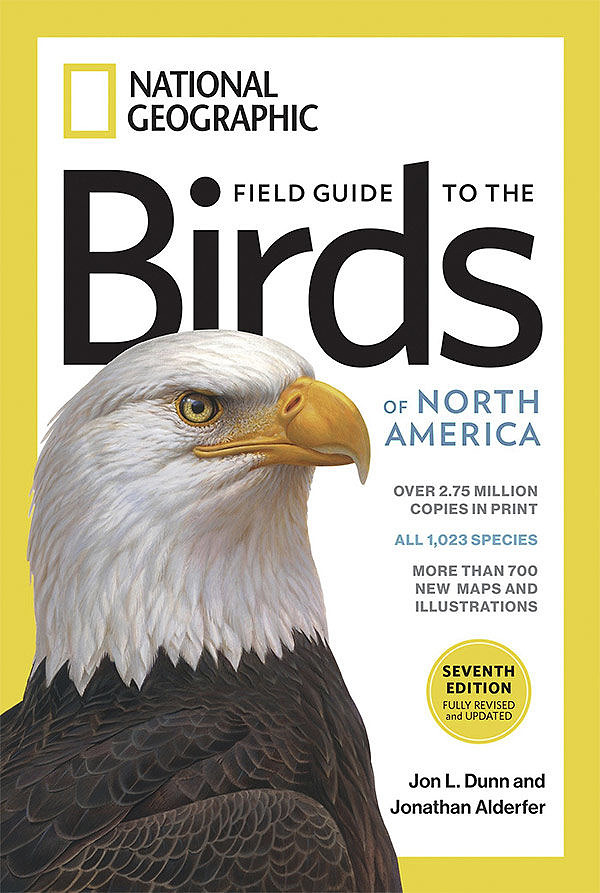 If Sibley’s books present a birder with illustration overload, the novice and advancing birder would do well with the National Geographic series. It offers fewer choices among plumages, in a good way, emphasizing those we’re most likely to encounter. Be sure to buy the most recent edition, which is the seventh at the time of this posting. In this series, owning both eastern and western volumes, with more mini learning essays in each one, is probably better than owning the single combined guide.
If Sibley’s books present a birder with illustration overload, the novice and advancing birder would do well with the National Geographic series. It offers fewer choices among plumages, in a good way, emphasizing those we’re most likely to encounter. Be sure to buy the most recent edition, which is the seventh at the time of this posting. In this series, owning both eastern and western volumes, with more mini learning essays in each one, is probably better than owning the single combined guide.
Another suggestion for novice birders: National Geographic Birding Essentials by Jonathan Alderfer and Jon L. Dunn, probably the best general book out there on how to learn birdwatching skills. Sibley’s Birding Basics is also great.
